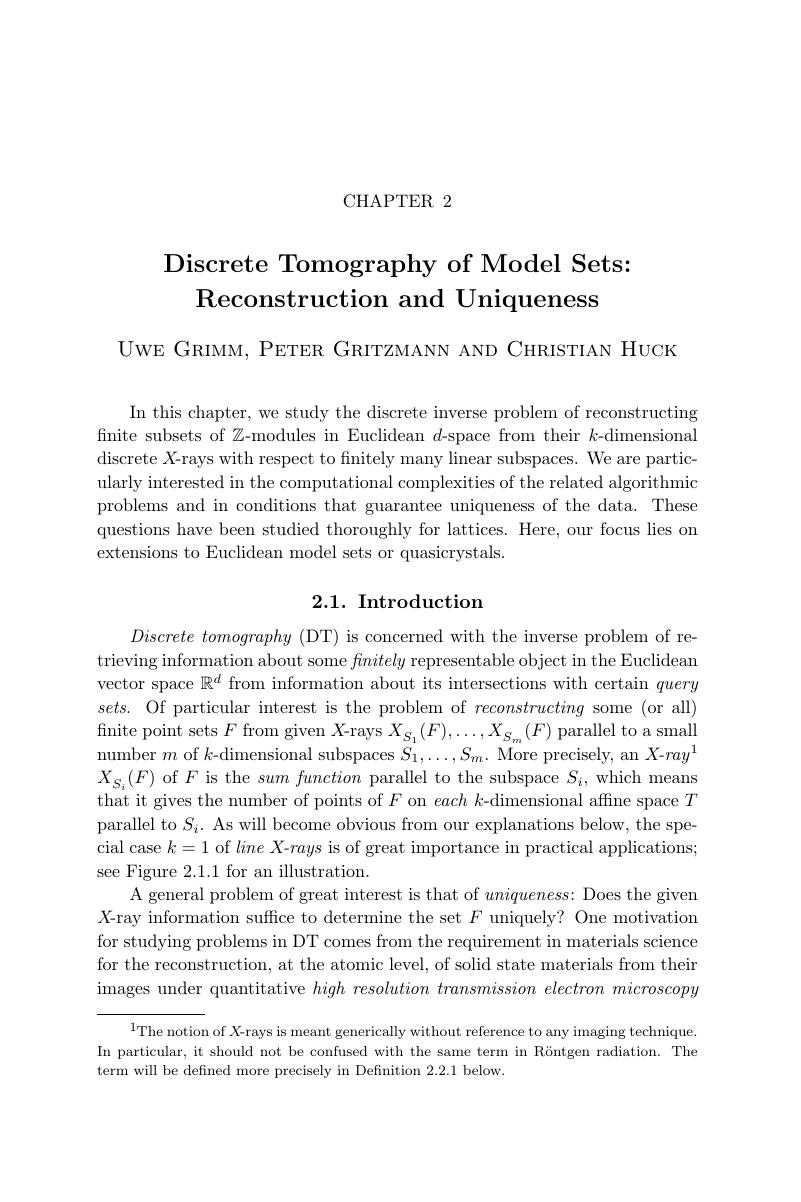Book contents
- Frontmatter
- Contents
- Contributors
- Foreword by Jeffrey C. Lagarias
- Preface
- Chapter 1 More Inflation Tilings
- Chapter 2 Discrete Tomography of Model Sets: Reconstruction and Uniqueness
- Chapter 3 Geometric Enumeration Problems for Lattices and Embedded ℤ-Modules
- Chapter 4 Almost Periodic Measures and their Fourier Transforms
- Chapter 5 Almost Periodic Pure Point Measures
- Chapter 6 Averaging Almost Periodic Functions along Exponential Sequences
- Epilogue. Gateways Towards Quasicrystals
- Index
- References
Chapter 2 - Discrete Tomography of Model Sets: Reconstruction and Uniqueness
Published online by Cambridge University Press: 26 October 2017
- Frontmatter
- Contents
- Contributors
- Foreword by Jeffrey C. Lagarias
- Preface
- Chapter 1 More Inflation Tilings
- Chapter 2 Discrete Tomography of Model Sets: Reconstruction and Uniqueness
- Chapter 3 Geometric Enumeration Problems for Lattices and Embedded ℤ-Modules
- Chapter 4 Almost Periodic Measures and their Fourier Transforms
- Chapter 5 Almost Periodic Pure Point Measures
- Chapter 6 Averaging Almost Periodic Functions along Exponential Sequences
- Epilogue. Gateways Towards Quasicrystals
- Index
- References
Summary

- Type
- Chapter
- Information
- Aperiodic Order , pp. 39 - 72Publisher: Cambridge University PressPrint publication year: 2017



